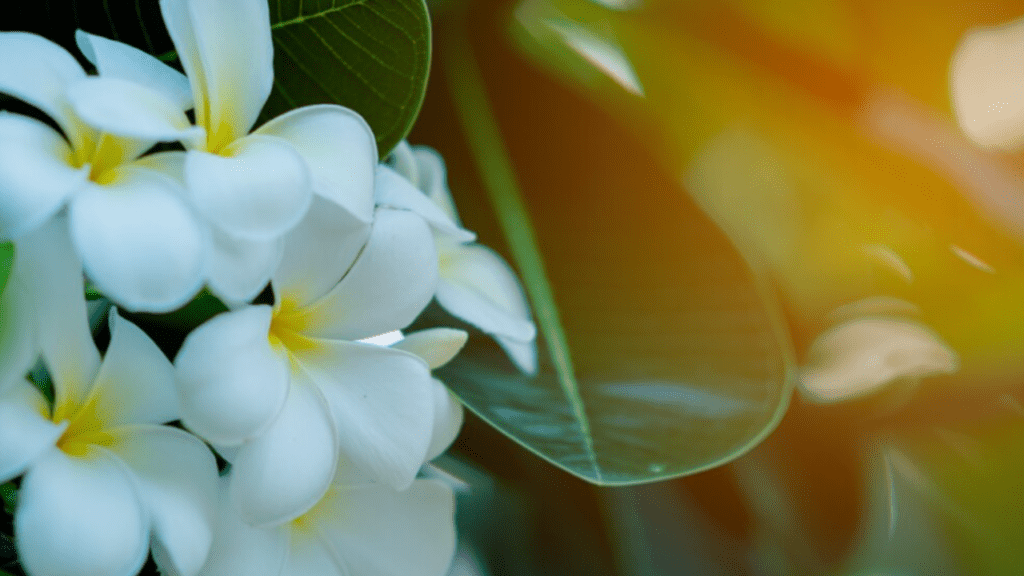
Ultimate Guide to Plumeria Care: Tips for Healthy and Vibrant Flowers
Plumeria plants are known for their beautiful and vibrant flowers, but they do require special care to ensure they thrive. In this ultimate guide, we will provide expert tips and advice on how to care for your plumeria plants, whether you’re a beginner or an experienced gardener. From watering and fertilizing to pest control and pruning, we’ve got you covered with everything you need to know to keep your plumeria plants healthy and blooming. Whether you’re looking to add a pop of color to your garden or simply want to ensure your existing plumeria plants flourish, this guide is your go-to resource for all things plumeria care.
Table of Contents
ToggleOverview of Plumeria Plants
Description of plumeria (frangipani) plants.
Plumeria, also known as frangipani, is a popular tropical plant known for its beautiful and fragrant flowers. The plant is native to Central America, the Caribbean, and South America, but it is now also commonly grown in tropical and subtropical regions around the world. The flowers of the plumeria plant come in a variety of colors, including white, yellow, pink, and red, and they are known for their delicate and sweet fragrance. The leaves of the plumeria plant are long and leathery, and the plant itself can grow into a small tree or large shrub, depending on the variety. Plumeria plants are often used in tropical gardens, and they can also be grown in containers or as indoor plants in colder climates. These plants are low-maintenance and can thrive in a range of soil types, as long as they receive plenty of sunlight and warmth. With the right care, plumeria plants can produce vibrant and beautiful flowers that will brighten up any garden or indoor space.
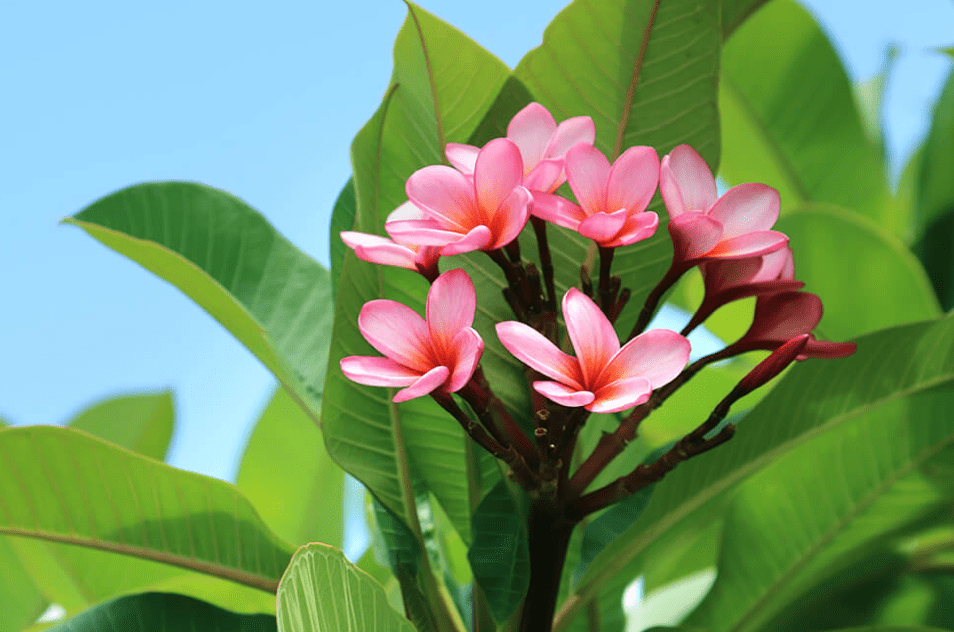
Popular varieties and their characteristics.
Plumeria, also known as frangipani, is a popular tropical plant known for its beautiful and fragrant flowers. There are several popular varieties of plumeria, each with its own unique characteristics. The “Singapore Pink” variety, for example, has vibrant pink flowers with a yellow center, while the “Aztec Gold” variety has stunning golden-yellow flowers. The “Celadine” variety is known for its bright yellow flowers with a sweet fragrance, and the “Mardi Gras” variety has multi-colored flowers with a sweet, floral scent. Plumeria plants can range in size, with some varieties growing into small trees while others remain as shrubs. These plants are also known for their low-maintenance nature and can thrive in a range of soil types as long as they receive plenty of sunlight and warmth. Plumeria plants are often used in tropical gardens and can also be grown in containers or as indoor plants in colder climates. With the right care, these plants can produce vibrant and beautiful flowers that will brighten up any garden or indoor space.
Climate and Growing Conditions
Ideal climate zones for plumeria.
Plumeria plants thrive in tropical and subtropical climates, so they do best in regions with warm temperatures and plenty of sunlight. They can be grown outdoors in USDA hardiness zones 9-11, which include areas like Florida, Hawaii, and Southern California. These regions provide the ideal conditions for plumeria to flourish and produce their vibrant and fragrant flowers. In cooler climates, plumeria plants can still be grown in containers and brought indoors during the winter months to protect them from frost and cold temperatures. It’s important to provide these plants with well-draining soil, regular watering, and plenty of sunlight to help them thrive. With the right care and attention, plumeria plants can bring a touch of tropical beauty to a wide range of climates.
Sunlight requirements: full sun vs. partial shade.
Plumeria plants thrive in tropical and subtropical climates, so they do best in regions with warm temperatures and plenty of sunlight. They can be grown outdoors in USDA hardiness zones 9-11, which include areas like Florida, Hawaii, and Southern California. These regions provide the ideal conditions for plumeria to flourish and produce their vibrant and fragrant flowers. In cooler climates, plumeria plants can still be grown in containers and brought indoors during the winter months to protect them from frost and cold temperatures. It’s important to provide these plants with well-draining soil, regular watering, and plenty of sunlight to help them thrive. With the right care and attention, plumeria plants can bring a touch of tropical beauty to a wide range of climates. When it comes to sunlight requirements, plumeria plants prefer full sun, which means they should be placed in an area that receives at least 6-8 hours of direct sunlight each day. However, they can also tolerate some partial shade, especially in the hottest part of the day. It’s important to monitor the sunlight conditions in your specific location and adjust the placement of your plumeria plants accordingly to ensure they receive the optimal amount of sunlight for healthy growth and flowering.
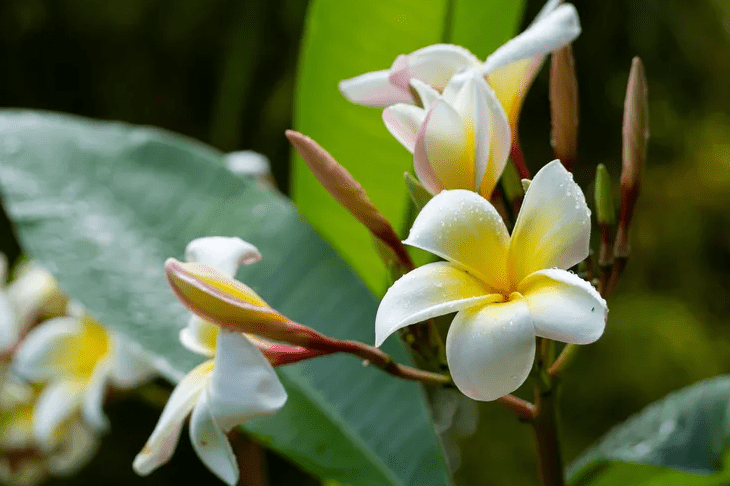
Soil preferences and drainage needs.
Plumeria plants thrive in regions with warm, tropical climates, providing the ideal conditions for them to produce their vibrant and fragrant flowers. However, in cooler climates, plumeria plants can still be grown in containers and brought indoors during the winter months to protect them from frost and cold temperatures. It’s important to provide these plants with well-draining soil, regular watering, and plenty of sunlight to help them thrive. With the right care and attention, plumeria plants can bring a touch of tropical beauty to a wide range of climates.
When it comes to sunlight requirements, plumeria plants prefer full sun, meaning they should be placed in an area that receives at least 6-8 hours of direct sunlight each day. However, they can also tolerate some partial shade, especially in the hottest part of the day. It’s important to monitor the sunlight conditions in your specific location and adjust the placement of your plumeria plants accordingly to ensure they receive the optimal amount of sunlight for healthy growth and flowering.
In terms of soil preferences, plumeria plants do best in well-draining soil that allows excess water to flow away from the roots. This helps prevent waterlogged soil, which can lead to root rot and other issues. Additionally, adding organic matter to the soil can help improve drainage and provide essential nutrients for the plants. By ensuring the right soil and drainage conditions, you can help your plumeria plants thrive and produce beautiful blooms.
Planting Plumeria
Best time to plant plumeria.
The best time to plant plumeria is in the spring, after the danger of frost has passed and the soil has started to warm up. This allows the plants to establish their root systems and begin growing before the heat of summer sets in. It’s important to choose a location with plenty of sunlight and well-draining soil for optimal growth. Plumeria plants can also be planted in pots if you live in a colder climate and need to bring them indoors during the winter. Overall, the best time to plant plumeria is in the spring when they can take advantage of the warm weather and ample sunlight to thrive.
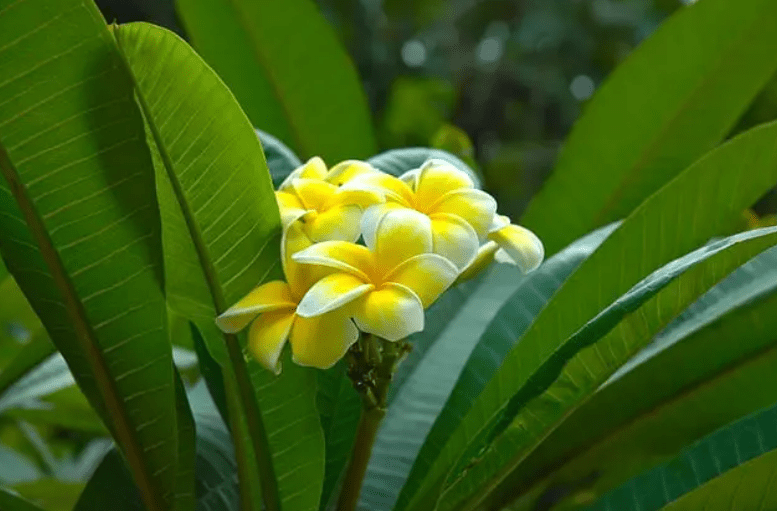
Step-by-step guide to planting.
- Choose the right location: Plumeria plants need plenty of sunlight and well-draining soil to thrive. Choose a location that gets at least 6-8 hours of sunlight per day and has soil that drains well.
- Prepare the soil: Before planting, make sure the soil is well-draining and nutrient-rich. You can add organic matter, such as compost or peat moss, to improve the soil quality.
- Dig a hole: Dig a hole that is about twice the size of the plumeria plant’s root ball. Make sure the hole is deep enough to accommodate the roots without bending or crowding them.
- Plant the plumeria: Gently remove the plumeria plant from its container and place it in the hole. Backfill the hole with soil, making sure to gently tamp it down to remove any air pockets.
- Water the plant: After planting, water the plumeria thoroughly to help settle the soil and provide moisture to the roots. Keep the soil evenly moist, but not waterlogged, to promote healthy growth.
- Mulch and fertilize: Mulch around the base of the plant to help retain moisture and control weeds. You can also fertilize the plant with a balanced fertilizer to promote growth and blooming.
- Monitor and care for the plant: Keep an eye on the plant and make sure to provide regular water and care as needed. Prune as needed to promote a healthy shape and encourage flowering.
By following these steps and providing the right care, you can help your plumeria plants thrive and produce beautiful blooms.
Container vs. ground planting considerations.
When deciding between container and ground planting for your plants, there are a few considerations to keep in mind. Container planting allows for more control over the soil, water, and nutrients the plant receives, while ground planting allows for more natural access to these elements. When planting in a container, it’s important to choose a pot with good drainage to prevent waterlogging and root rot. Keep the soil evenly moist, but not waterlogged, to promote healthy growth. Mulch around the base of the plant to help retain moisture and control weeds. You can also fertilize the plant with a balanced fertilizer to promote growth and blooming. When planting in the ground, make sure the soil is well-draining and rich in nutrients. Monitor and care for the plant by providing regular water and pruning as needed to promote a healthy shape and encourage flowering. By following these steps and providing the right care, you can help your plants thrive and produce beautiful blooms, whether they are planted in containers or in the ground.
Watering and Moisture Needs
Watering frequency and amount during different seasons.
It’s important to adjust your watering frequency and amount based on the season. During the spring and summer months, plants tend to require more water due to the warmer temperatures and increased evaporation. It’s important to water your plants more frequently during these seasons to keep the soil evenly moist. However, be careful not to overwater, as this can lead to waterlogging and root rot. In the fall and winter, plants typically require less water due to the cooler temperatures and reduced evaporation. It’s important to reduce your watering frequency during these seasons to prevent waterlogged soil and potential damage to the roots. Additionally, be mindful of the amount of water you are providing to your plants. Use a moisture meter or simply check the soil with your finger to ensure that you are providing the right amount of water. Overall, it’s important to monitor the moisture needs of your plants and adjust your watering routine accordingly based on the season. This will help promote healthy growth and thriving plants.
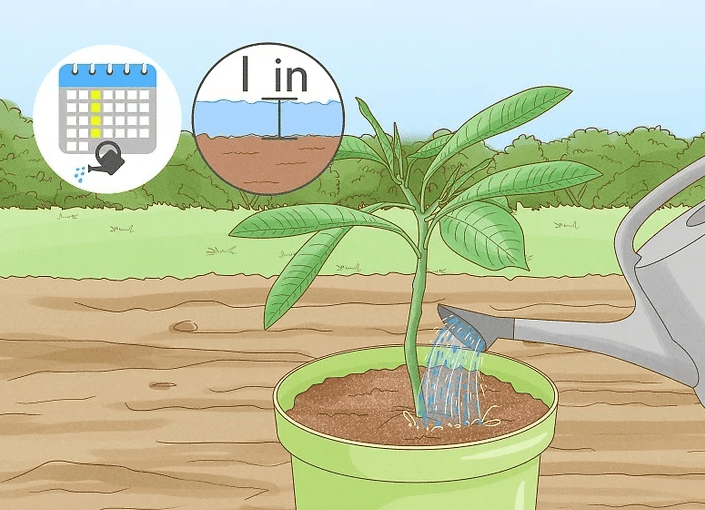
Importance of well-draining soil.
Well-draining soil is essential for the health and growth of your plants. It allows excess water to drain away, preventing waterlogged soil and root rot. Overwatering can be detrimental to your plants, so it’s important to be mindful of the amount of water you are providing. In the fall and winter, plants typically require less water due to cooler temperatures and reduced evaporation. Adjusting your watering frequency during these seasons can prevent waterlogged soil and potential damage to the roots. It’s important to monitor the moisture needs of your plants and adjust your watering routine accordingly. Using a moisture meter or simply checking the soil with your finger can help ensure that you are providing the right amount of water. By maintaining well-draining soil and adjusting your watering routine based on the season, you can promote healthy growth and thriving plants.
Signs of overwatering and underwatering.
Overwatering and underwatering are common issues that can negatively impact the health of your plants. Signs of overwatering include yellowing or wilting leaves, mushy or discolored roots, and a foul odor coming from the soil. On the other hand, signs of underwatering include dry, brittle, or brown leaves, and soil that has pulled away from the edges of the pot. To prevent overwatering, it’s important to ensure that your plants are in well-draining soil and that any excess water is able to drain away. This can prevent waterlogged soil and root rot, which can be detrimental to the health of your plants. It’s also important to adjust your watering routine based on the season, as plants typically require less water in the fall and winter due to cooler temperatures and reduced evaporation. Monitoring the moisture needs of your plants and using a moisture meter or checking the soil with your finger can help ensure that you are providing the right amount of water. By being mindful of the signs of overwatering and underwatering and adjusting your watering routine accordingly, you can promote healthy growth and thriving plants.
Fertilizing Plumeria
Types of fertilizers for plumeria (organic vs. synthetic).
When it comes to fertilizing plumeria plants, you have the option of using organic or synthetic fertilizers. Organic fertilizers are derived from natural sources such as compost, manure, and bone meal. These fertilizers provide a slow release of nutrients to the plant and improve soil structure. On the other hand, synthetic fertilizers are derived from chemical compounds and provide a quick release of nutrients to the plant. They are formulated to deliver specific nutrients to the plant and can be tailored to meet the plant’s specific needs. When choosing between organic and synthetic fertilizers for plumeria, it’s important to consider the specific needs of your plant and your preferences as a gardener. Some gardeners prefer organic fertilizers because they are environmentally friendly and promote soil health, while others prefer synthetic fertilizers for their convenience and precise nutrient delivery. Ultimately, the choice between organic and synthetic fertilizers for plumeria depends on your individual gardening goals and practices.
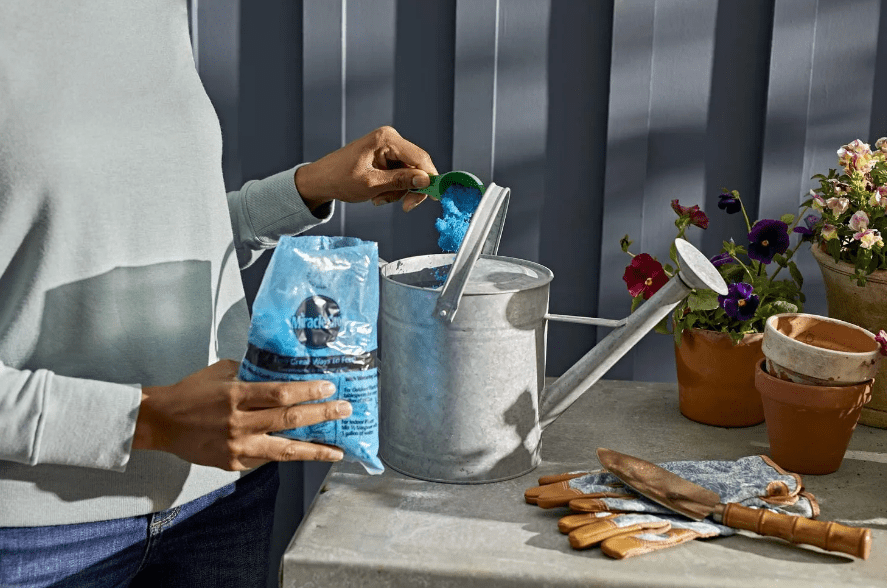
Frequency and timing of fertilization.
When it comes to fertilizing your plants, the frequency and timing of fertilization can vary depending on the type of fertilizer you are using and the specific needs of your plants. Organic fertilizers, such as compost or manure, provide a slow release of nutrients to the plant and can be applied less frequently, typically once or twice a growing season. On the other hand, synthetic fertilizers provide a quick release of nutrients and may need to be applied more frequently, following the instructions on the product label. It’s important to pay attention to the specific needs of your plants and adjust the frequency and timing of fertilization accordingly. Over-fertilization can harm your plants, so it’s important to follow the recommended guidelines for application. If you’re unsure about the best frequency and timing of fertilization for your plants, it’s a good idea to consult with a gardening expert or do some research to ensure you’re providing the right nutrients at the right time.
Pruning and Trimming
Benefits of pruning plumeria.
Pruning plumeria plants can have several benefits. It helps to promote healthy growth by removing dead or diseased branches, allowing for better air circulation and reducing the risk of pests and diseases. Pruning can also help to shape and control the size of the plant, making it more aesthetically pleasing and easier to manage in your garden or landscape. Additionally, pruning can stimulate the development of new growth and flowers, leading to a more abundant and beautiful display. It’s important to prune plumeria plants at the right time and with the proper tools to ensure the best results. Overall, regular pruning can help to maintain the health and appearance of your plumeria plants.
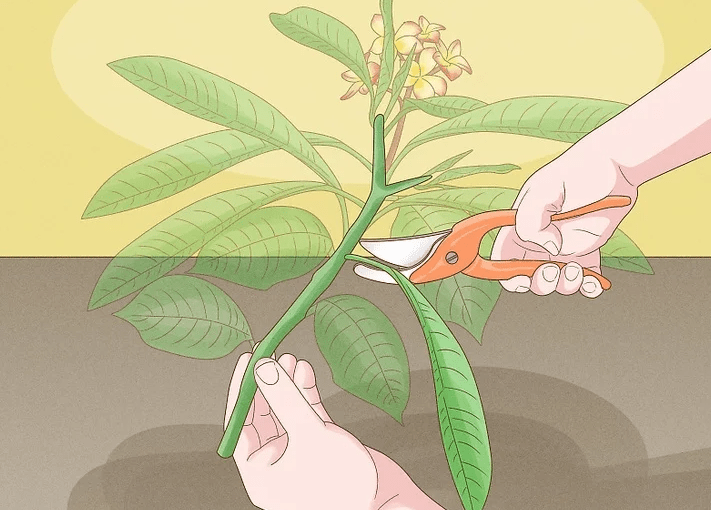
Pruning techniques for shaping and promoting growth.
Pruning and trimming are essential techniques for shaping and promoting the growth of plants, including plumeria. With proper pruning, you can remove dead or diseased branches, allowing for better air circulation and reducing the risk of pests and diseases. Additionally, pruning helps to shape and control the size of the plant, making it more aesthetically pleasing and easier to manage in your garden or landscape. It also stimulates the development of new growth and flowers, leading to a more abundant and beautiful display. When pruning plumeria plants, it’s important to do it at the right time and with the proper tools to ensure the best results. By regularly pruning your plumeria plants, you can maintain their health and appearance, ensuring they continue to thrive and bloom beautifully.
Pest and Disease Management
Common pests affecting plumeria.
Plumeria plants are susceptible to a few common pests, including aphids, mealybugs, and spider mites. These pests can damage the leaves and flowers of the plant, as well as spread diseases. It’s important to regularly inspect your plumeria for signs of pest infestation, such as yellowing or distorted leaves, sticky residue on the leaves, or webbing on the undersides of the leaves. If you notice any of these signs, it’s important to take action to control the pests and prevent further damage to your plumeria. There are a few different methods for managing pests on plumeria care plants, including using insecticidal soaps or oils, spraying the plant with water to dislodge the pests, or introducing natural predators, such as ladybugs, to the area. It’s also important to keep the area around the plumeria plant clean and free of debris, as this can attract pests. By regularly monitoring your plumeria plants and taking steps to manage pests, you can help to keep them healthy and flourishing.
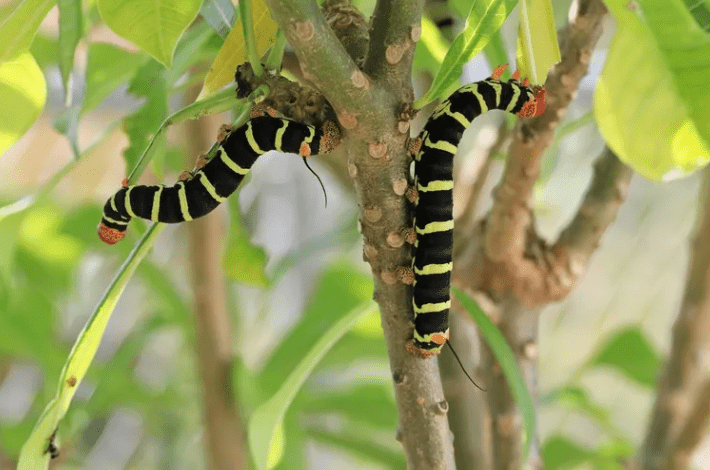
Symptoms and signs of pests and diseases.
Plumeria plants are susceptible to a few common pests, including aphids, mealybugs, and spider mites. These pests can damage the leaves and flowers of the plant, as well as spread diseases. It’s important to regularly inspect your plumeria care for signs of pest infestation, such as yellowing or distorted leaves, sticky residue on the leaves, or webbing on the undersides of the leaves. If you notice any of these signs, it’s important to take action to control the pests and prevent further damage to your plumeria.
There are a few different methods for managing pests on plumeria plants, including using insecticidal soaps or oils, spraying the plant with water to dislodge the pests, or introducing natural predators, such as ladybugs, to the area. It’s also important to keep the area around the plumeria care plant clean and free of debris, as this can attract pests. By regularly monitoring your plumeria plants and taking steps to manage pests, you can help to keep them healthy and flourishing. It’s important to be proactive in preventing and managing pests and diseases in order to maintain the health and beauty of your plumeria care plants.
Winter Care and Protection
During the winter months, it’s important to take extra care to protect your plants from the cold and harsh weather. Be sure to bring any sensitive plants indoors or cover them with protective materials to shield them from the cold. Additionally, be mindful of the water needs of your plants during the winter, as they may require less frequent watering. It’s also a good idea to check for signs of pests or disease during this time and take appropriate measures to prevent any issues from developing. By providing your plants with the care and protection they need during the winter, you can help ensure that they remain healthy and thrive when spring arrives.
Propagation Methods
Propagation Methods are essential for the growth and development of plumeria care plants. There are several methods that can be used to propagate plumeria, including stem cuttings, seed germination, and grafting. Stem cuttings involve taking a portion of a healthy plumeria plant and planting it in soil to encourage root growth. Seed germination is another method that involves planting plumeria seeds in soil and providing the right conditions for them to sprout and grow. Grafting is a more advanced method that involves joining a portion of a plumeria plant to another plant in order to promote growth and development. Each of these propagation methods has its own benefits and challenges, and it’s important to choose the right method for your specific needs and goals. By understanding the different propagation methods and how to effectively use them, you can ensure the continued growth and propagation of your plumeria plants.
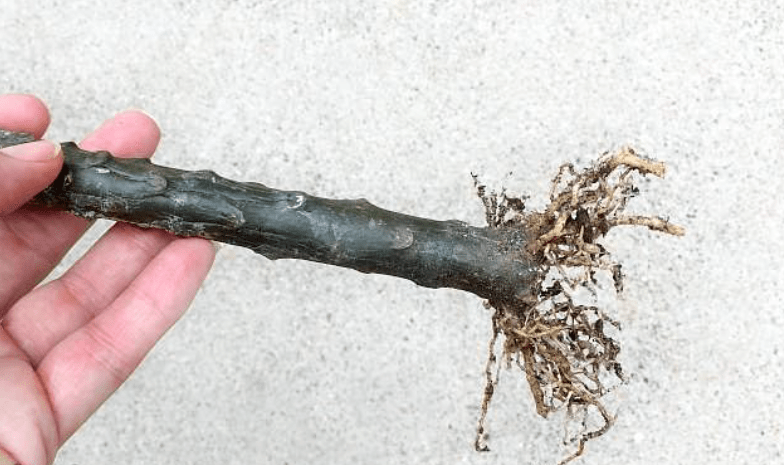
In conclusion, caring for your plumeria plants involves providing the right amount of sunlight, water, and nutrients, as well as protecting them from pests and diseases. By following the tips and advice in this guide, you can ensure that your plumeria plants produce beautiful, vibrant flowers and thrive in your garden or outdoor space. Remember to regularly check for any signs of distress or issues and address them promptly to keep your plumeria plants healthy and flourishing.
Frequently asked questions And Answer
Plumeria plants should be watered deeply once a week during the growing season, and less frequently during the dormant season. It’s important to allow the soil to dry out between waterings to prevent root rot.
Plumeria plants thrive in well-draining soil, such as a mix of potting soil and perlite or coarse sand. This helps prevent water from pooling around the roots and causing damage.
Plumeria plants require at least 6-8 hours of direct sunlight each day to thrive and produce vibrant flowers. They should be placed in a sunny spot, such as a south or west-facing window or outdoors in a sunny garden.
Plumeria plants benefit from a high-phosphorus fertilizer, such as a 10-30-10 or 10-50-10 formula, applied every 2-3 weeks during the growing season. Be sure to follow the instructions on the fertilizer package for proper application.
Regularly inspect your plumeria plant for pests such as aphids, mealybugs, and spider mites, and treat with insecticidal soap if necessary. Additionally, avoid overwatering and provide good air circulation to prevent fungal diseases.
Pruning should be done in late winter or early spring before new growth appears. Remove any dead or damaged branches, and shape the plant as desired to encourage healthy growth and flowering.
Yes, plumeria plants can be grown indoors in containers as long as they receive adequate sunlight and are watered and fertilized properly. Be sure to provide a warm and humid environment, as plumeria plants are native to tropical regions.
To encourage blooming, ensure that your plumeria plant is receiving enough sunlight, water, and fertilizer. Additionally, stress the plant by withholding water for a short period or exposing it to cooler temperatures to trigger blooming.
